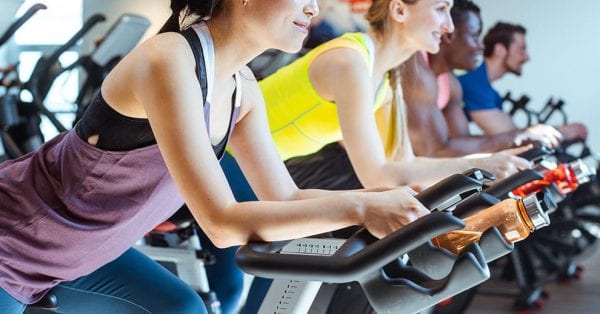Your joint health is an important factor in overall health and fitness. Joints allow us to move in all kinds of ways: jumping, twisting, turning, and walking to name a few. To keep your joints healthy, you need to keep your muscles strong and limber. These exercises for joint health will build muscle and increase flexibility.
- Flexibility Exercises
Your joints benefit from your muscles being strong and flexible, so yoga, pilates, and tai chi are great exercises for joint health. These exercises and other stretching routines can improve your range-of-motion. They also get you moving with a low impact on your joints.
- Squats
You can do squats without any equipment. This exercise uses your own body weight to help strengthen the muscles around your knees, ankles, and hips. To do a bodyweight squat, stand in front of a chair or bench. Keep your knees in line with your feet as you lower yourself to the seat. Touch the seat lightly and stand again. Be careful to not let your knees extend past your toes, as this can cause injury.
- Lunges
Low lunges can help stretch and strengthen your hip flexors, which can get tight from sitting for extended periods of time. Step forward with one foot, bend your knee and extend your back leg behind you. Adjust so that your front knee is not bent past 90 degrees. Square your hips and press forward to feel the stretch. Hold for 30 seconds and then switch sides. You can increase the intensity of lunges by adding an overhead reach.
- Pullups
Pullups are great for strengthening the muscles around the shoulders and elbows. If you can’t do a pullup unassisted, doing an assisted version will also do the trick. For an assisted pullup, stand on the platform of the pullup machine. For an unassisted pullup, stand on the ground. Begin with the arms fully extended and pull all the way up.
- Pushups
Like pullups, pushups help protect your shoulders and elbows. Your form is important when doing pushups, so make sure you keep your body in a straight line and don’t let your back sag during the pushup. Start at the top of the position with your hands shoulder-width apart. Lower your chest toward the floor and then extend your arms to push back up. You can do modified pushups by starting on your knees or using a ball.
- Swimming
Aerobic exercises, or cardio, is crucial for maintaining overall fitness and can keep you energized. It can also help with stamina. Swimming gets your heart pumping and your muscles working without straining joints, making it one of the best low impact aerobic exercises for joint health.
- Cycling
Cycling can be a good low-impact aerobic exercise for those with joint issues. Using a bicycle and getting outdoors can be a good way to take your workout out of the gym and get fresh air. Stationary bikes, including the recumbent type, are another good option. For higher intensity cycling workout, look into local spin classes.
- Weight Training
Weight training and strength training exercises help build and maintain the muscle necessary to support and protect joints. There are several strength exercises for joint health that use free weights, weight machines, and resistance that are good for joints. Just make sure you rotate which muscle groups you exercise to avoid overuse.
- Foam Rolling
Foam rolling is a great way to release knots and improve your flexibility. As mentioned before, flexibility exercises are important for protecting your joints. Many stores sell foam cylinders meant for rolling. Or you can DIY a roller by using a PVC pipe or small ball (tennis balls are good choices). To roll out your knots you can roll over a large area to stretch and lengthen muscles or use shorter back and forth motions to work out a knot or sore spot. \
Other Tips
- Keep workouts low impact to avoid further joint injury
- Apply heat before starting to relax joints and muscles
- Use ice after workouts (for up to 20 minutes) to prevent pain and swelling.
- Move gently, especially as you begin the workout
- Go slowly and ease into each exercise
- Don’t overdo it and listen to your body, especially if you are just getting back into an exercise routine
- Talk to your doctor about what kind of pain and soreness is normal before you start your routine.
—
At Paris Orthopedics and Sports Medicine, our board-certified physicians are experts at treating injuries of all types and severities. If you have questions or concerns about your joint health, including which exercises are best for joints, call (903) 737-0000 to make an appointment.


